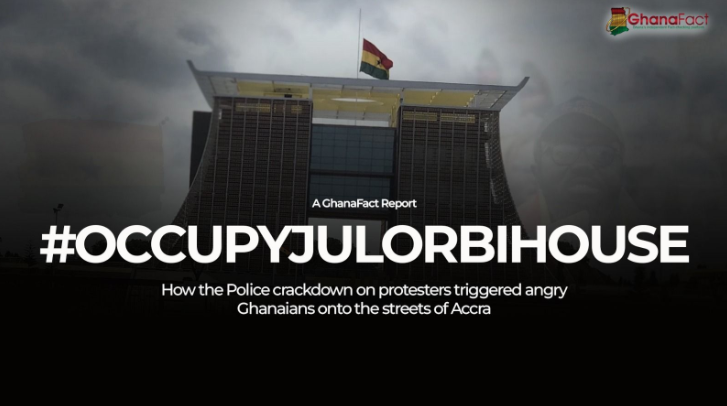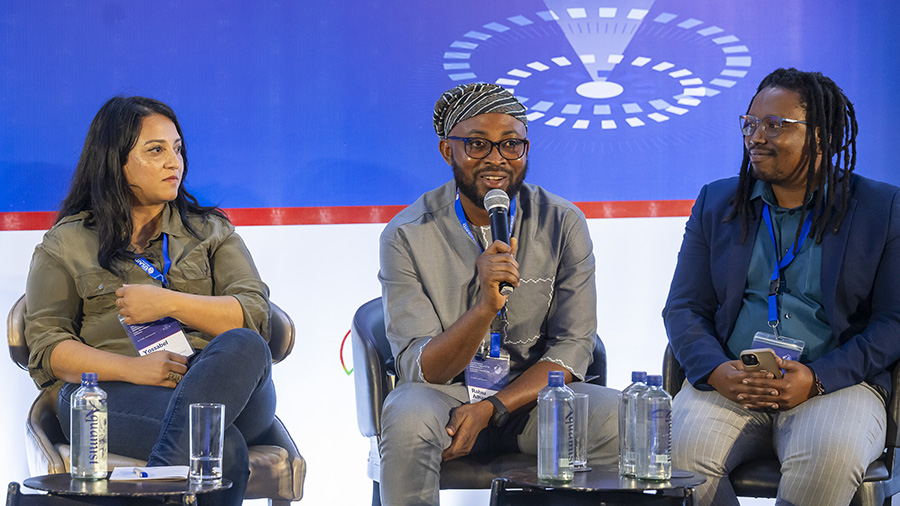Let us know what type of content you'd like to see more of. Fill out our three question survey.
Combatting Disinformation: 3 Ways Digital Development Projects Can Build Information Resilience
Jun 20, 2024
The rapid spread of false or misleading information on social media platforms undermines the progress of digital development. Disinformation is designed to manipulate facts, is often spread by undemocratic actors to advance their agendas, mislead the public, and can sow confusion around major events such as elections, conflicts, and epidemics. Government actors can also use disinformation to suppress opposition, threatening democratic processes.
Social media platforms have been especially weaponized to spread disinformation. There is a higher probability of false information going viral because algorithms are designed to maximize controversial content as it is more likely to generate likes and shares, resulting in disinformation spreading at an alarming rate.
Digital development projects can mitigate the effects of disinformation by designing programs with these risks in mind. Below, we explore three steps organizations can take to mitigate the negative effects of disinformation and build information resilience.
Increase the Capacity of Fact-Checking Organizations
Global fact-checking efforts must constantly evolve to stay up to date with new types of content, from the spread of artificial intelligence (AI)-generated media to the emergence of realistic deepfakes. Donors and development agencies can support media accountability and integrity by increasing funding toward building the capacity of journalists and fact-checkers working in this arena.
FactSpace West Africa is one such organization. As part of a pilot program with five grantees funded by the Conflict, Peacebuilding, and Governance Division in the U.S. Agency for International Development (USAID) Africa Bureau, FactSpace is expanding its fact-checking capabilities in the Gambia, Ghana, Liberia, Nigeria, and Sierra Leone. FactSpace and similar groups play a critical role in checking claims made by influential figures and providing independent, non-partisan reporting to curb disinformation.

From the FaceSpace article.
However, fact-checkers are fighting an uphill battle in the age of social media and amid a dip in support for fact-checking from social media companies. Through the grant program, FactSpace, with training facilitated by fellow grantee Centre for Analytics and Behavioural Change (CABC), is getting access to Brandwatch, a social media analytics tool that would be out of budget for many nonprofits. Brandwatch has become a key tool for FactSpace in its research, as demonstrated by a recent article analyzing the role of social media activism in a protest in Ghana.
Leverage Social Media Analytics
Social media analytics is a process used by fact-checkers, organizations, and businesses to understand trends on social media platforms and analyze user behavior. In this context, using social media analytics tools will not explicitly differentiate between true and false claims, but can still be a way to observe data, recognize patterns, and track shifts in opinions, all of which help to detect instances of disinformation. Tools such as Brandwatch and Meltwater can track keywords and the contexts in which they appear. They can find the key players involved in spreading certain false claims, locations where suspicious activity is most common, and users who frequently face hate speech online. USAID grantees Pollicy and Nendo, for example, are using social media analytics to examine instances of technology-facilitated gender-based violence in Kenya. Pollicy and Nendo will then use these findings to facilitate a co-creation workshop to discuss solutions to address technology-facilitated gender-based violence.
There are diverse use cases for social media analytics, such as helping development practitioners understand the scale of disinformation, hate speech, or violence in areas where they plan to do programming. Development practitioners can use the data to design their programs with mitigation strategies in mind. The Conflict, Peacebuilding, and Governance Division in the USAID Africa Bureau commissioned a how-to guide for USAID Missions or partners that may want to incorporate social media analytics into activity designs. Findings from social media analytics may be used for programming such as behavioral change campaigns to raise awareness about disinformation and change public attitudes and actions through targeted interventions.

From left, USAID grantees CABC, FactSpace, and MMA presenting at the “Countering Digital Threats to Democracy: Forging a Path to Responsible Digital Development” conference in Kenya.
Design Media Literacy and Digital Safety Initiatives
In addition to incorporating social media analytics into their activities, development practitioners, donors, and grant seekers may want to consider incorporating media literacy initiatives into future programming. These initiatives can train social media users to evaluate, analyze, and be skeptical of the validity of the information they consume. Media literacy is a key factor when designing programs to counter digital risks and threats. There are numerous resources that projects can draw from, such as IREX’s Learn To Discern curriculum, OECD’s Digital Media Literacy Tips, or ISD’s 101 of Disinformation Detection. These resources include topics such as learning to investigate the source, checking the evidence, and watching for unusual formatting to discern disinformation.
Considering the rapid growth of the global digital ecosystem, it is also important to incorporate digital safety awareness and training in development programming. USAID’s Digital Asia Accelerator, a project under the Digital Connectivity and Cybersecurity Partnership initiative, launched the Wai Kid Digital University Challenge in Thailand. The initiative challenged university students to create and disseminate informational videos for the public to practice digital safety by learning how to spot fake information, keep their personal information safe online, and protect themselves from cyberbullying. Through this challenge, participants became more aware of the topic while championing digital safety and helped creatively educate the public.
Digital Rights are Human Rights
Countering digital threats and the spread of disinformation has become a top priority for digital development projects. And while the landscape is constantly evolving and the tactics to spread disinformation are becoming more manipulative and sophisticated, so are the tools and the approaches designed to combat it. Digital rights are human rights, and it’s important to promote a secure and open internet, free of messages that deceive and undermine trust and hinder the progress made by digital development initiatives.
To learn more about combating the spread of disinformation, the USAID Disinformation Primer is a valuable resource offering a list of recommendations for implementation.